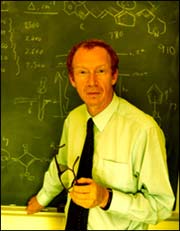This topic covers issues related to energy generation, conversion, transportation and consumption and how the industry is addressing the challenge of energy efficiency in general.
innovations-report provides in-depth and informative reports and articles on subjects ranging from wind energy, fuel cell technology, solar energy, geothermal energy, petroleum, gas, nuclear engineering, alternative energy and energy efficiency to fusion, hydrogen and superconductor technologies.

For the first time, an international research program involving the Department of the Interior’s U.S. Geological Survey has proven that it is technically feasible to produce gas from gas hydrates. Gas hydrates are a naturally occurring “ice-like” combination of natural gas and water that have the potential to be a significant new source of energy from the world’s oceans and polar regions.
Today at a symposium in Japan, the successful results of the first modern, fully integrated p

As utility companies search for ways to avoid blackouts, like the one that shut down the northeastern corner of the United States last summer, one idea comes from the University of Wisconsin-Madison.
Researchers from the College of Engineering have designed a system where a small network of local generators can reliably disconnect from the rest of the power supply, enabling locations where electricity is critical to stay in operation.
Most buildings receive their electrical power

In this PhD thesis, Eugenio Gubía proposed a solution for the problems of electric motors run from power converters. Controlling motors and electric generators by means of power converters has negative effects with the presence of overtvoltages and high-frequency currents throughout the installation. These effects accelerate the ageing process of the motors and, moreover, can provoke faults in the correct operating of the control circuits.
Thus, in his PhD, Mr Gubia has developed a generic m

The recently created “Photovoltaics Technology Research Advisory Council” will meet for the first time on 4 December 2003 in Brussels. The initiative of the European Commission involves 18 members representing all the major players in this technology.
Europe is now the world’s second largest manufacturer of photovoltaics, accounting for more than 24% of overall production, behind Japan (44%) and ahead of the USA (22%). Current forecasts show large potential for solar electricity produc

New research from the National Institute of Standards and Technology (NIST) suggests that next-generation, high-temperature superconductor (HTS) wire can withstand more mechanical strain than originally thought. As a result, superconductor power cables employing this future wire may be used for transmission grid applications. Projected to become available in three to four years, the advanced superconductor wire (known in the industry as second generation HTS wire) is expected to cost less than the HT

Alistair Lees spends much of his research time hoping to see the light.
Using tools that improve by several orders of magnitude on the accuracy of microscopes and stopwatches, Lees is working at the molecular level to explore the effect of light on chemical systems. The field is called photochemistry and Lees’ efforts could help to find less-expensive ways to produce gasoline, make the environment cleaner and safer, and enhance the quality of microcircuitry and the equipment tha